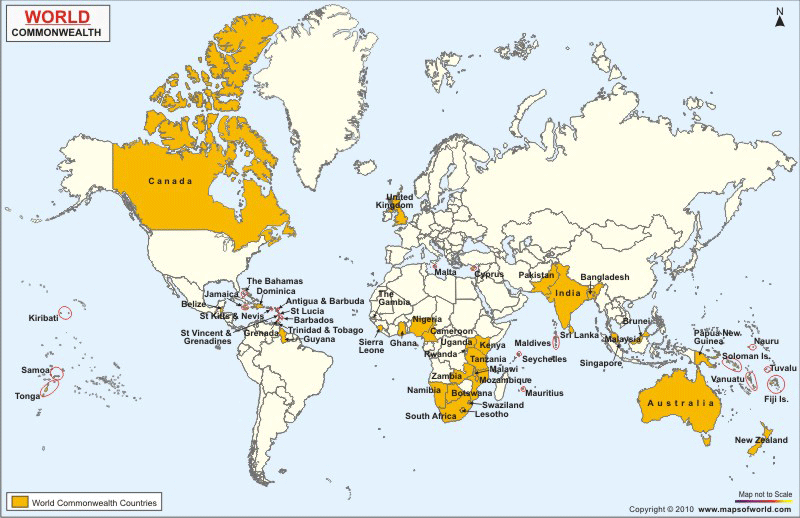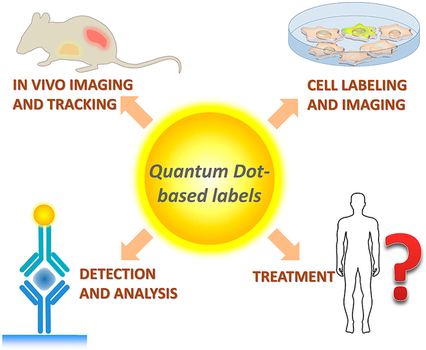Contents
- SAMARTH under NMEICT scheme
- 32nd Commonwealth Health Ministers’ Meeting
- CIC to begin hearing RTI cases from J&K and Ladakh UTs
- ARI develop novel process for synthesis of Quantum Dots
- COBAS 6800 testing machine
SAMARTH UNDER NMEICT SCHEME
Focus: GS-II Social Justice, Prelims
Why in news?
The Department of Higher Education, M/o Human Resource Development has developed an e-Governance platform, SAMARTH (Enterprises Resource Planning) ERP, under National Mission of Education in Information and Communication Technology Scheme (NMEICT).
Details
- ERP, SAMARTH, is an Open Standard Open Source Architecture, Secure, Scalable and Evolutionary Process Automation Engine for Universities and Higher Educational Institutions.
- Now, the ERP, SAMARTH, has been implemented at National Institute of Technology, Kurukshetra, a participating unit under the World Bank supported Technical Education Quality Improvement Program (TEQIP).
- It caters to faculty, students and staff at a University/Higher Educational Institutions.
- The objective of this initiative is to automate the processes of the Institute.
- This initiative will enhance the productivity through better information management in the institute by seamless access to information, and its utilization for various purposes.
National Mission on Education through Information and Communication Technology (NMEICT)
The National Mission on Education through Information and
Communication Technology (ICT) has been envisaged as a Centrally Sponsored Scheme to leverage the potential of ICT, in teaching and learning process for the benefit of all the learners in Higher Education Institutions in any-time anywhere mode.
- It seeks to bridge the digital divide, i.e., the gap in the skills to use computing devices for the purpose of teaching and learning among urban and rural teachers/learners in Higher Education domain.
- One of the primary objectives of NMEICT is making available of e-knowledge contents, free of cost to Indians.
- The Mission would create high quality e-content for the target groups.
- It plans to focus on appropriate pedagogy for e-learning, providing facility of performing experiments through virtual laboratories, on-line testing and certification, utilization of available Education Satellite (EduSAT) and Direct to Home (DTH) platforms, training and empowerment of teachers to effectively use the new method of teaching learning etc.
- Central Government would bear 75% of the connectivity charges for 5 years even for institutions not belonging to it.
The Mission has two major components:
- Providing connectivity, along with provision for access devices, to institutions and learners;
- Content generation.
Notable Initiatives under the NMEICT Program:
SWAYAM and SWAYAM Prabha:
Click Here to read more about SWAYAM and SWAYAM Prabha
National Digital Library of India (NDL):
- It is a project to develop a framework of virtual repository of learning resources with a single-window search facility.
- Presently, there are more than 3 crore digital resources available through the NDL.
Spoken Tutorial:
- They are 10-minute long, audio-video tutorial, on open source software, to improve employment potential of students.
- It is created for self-learning, audio dubbed into 22 languages and with the availability of online version.
Free and Open Source Software for Education (FOSSEE):
- It is a project promoting the use of open source software in educational institutions.
- It does that through instructional material, such as spoken tutorials, documentation, such as textbook companions, awareness programmes, such as conferences, training workshops, and internships.
Virtual Lab:
- This is a project to develop a fully interactive simulation environment to perform experiments, collect data, and answer questions to assess the understanding of the knowledge acquired.
- There are about 225 such labs operational, with more than 1800 experiments that benefitted more than 15 lakhs students.
E-Yantra:
- It is a project for enabling effective education across engineering colleges in India on embedded systems and robotics.
- More than 275 colleges across India have benefited with this initiative.
32ND COMMONWEALTH HEALTH MINISTERS’ MEETING
Focus: GS-II International Relations, Prelims
Why in news?
- The Union Minister of Health & Family Welfare participated in the 32nd Commonwealth Health Ministers’ Meeting through Video Conference on 14th May 2020.
- It was Highlighted that India has been the first country to urge consolidated global action to fight the challenge of COVID-19, given that India convened a meeting of SAARC leaders in mid-March.
The Commonwealth
The Commonwealth, also known as The Commonwealth of Nations, is a political association of 54 member states, nearly all former territories of the British Empire.

- The chief institutions of the organisation are the Commonwealth Secretariat, which focuses on intergovernmental aspects, and the Commonwealth Foundation, which focuses on non-governmental relations between member states.
- The Commonwealth dates back to the first half of the 20th century with the decolonisation of the British Empire through increased self-governance of its territories.
- Member states have NO legal obligations to one another, but are connected through their use of the English language and historical ties.
- Their stated shared values of democracy, human rights and the rule of law are enshrined in the Commonwealth Charter and promoted by the quadrennial Commonwealth Games.
- The Constituent Assembly of India accepted and approved India’s membership of the British Commonwealth in May 1949.
CIC TO BEGIN HEARING RTI CASES FROM J&K AND LADAKH UTs
Focus: GS-II Governance, Polity, Prelims
Why in news?
The Central Information Commission (CIC) is set to start hearing Right to Information (RTI) Act applications of applicants from the UTs of J&K and Ladakh from tomorrow 15 May 2020.
The Minister also informed that any citizen of India can now file RTI pertaining to matters related to J&K and Ladakh, which was reserved to only Citizens of erstwhile State of Jammu and Kashmir, before the Reorganisation Act of 2019.
Click Here to read more about the Jammu and Kashmir Reorganisation Act
Right to Information (RTI) Act
Right to Information (RTI) is an act of the Parliament of India which sets out the rules and procedures regarding citizens’ right to information.
Under the RTI Act, 2005, Public Authorities are required to make disclosures on various aspects of their structure and functioning.
This includes:
- disclosure on their organisation, functions, and structure,
- powers and duties of its officers and employees, and
- financial information.
Note: “Public Authorities” here includes bodies of self-government established under the Constitution, or under any law or government notification. E.g.: Ministries, public sector undertakings, and regulators. It also includes any entities owned, controlled or substantially financed and non-government organizations substantially financed directly or indirectly by funds provided by the government.
- The intent of such suo moto disclosures is that the public should need minimum recourse through the Act to obtain such information.
- If such information is not made available, citizens have the right to request for it from the Authorities.
- This may include information in the form of documents, files, or electronic records under the control of the Public Authority.
- The intent behind the enactment of the Act is to promote transparency and accountability in the working of Public Authorities.
Is RTI a Fundamental Right?
- RTI is a fundamental right for every citizen of India.
- The authorities under RTI Act 2005 are called quasi-judicial authorities.
- This act was enacted in order to consolidate the fundamental right in the Indian constitution ‘freedom of speech’.
- Since RTI is implicit in the Right to Freedom of Speech and Expression under Article 19 of Indian Constitution, it is an implied fundamental right.
Enforcement of RTI
The Act has established a three-tier structure for enforcing the right to information guaranteed under the Act.
- The first request for information goes to Central/State Assistant Public Information Officer and Central/State Public Information Officer, designated by the Public Authorities. These Officers are required to provide information to an RTI applicant within 30 days of the request.
- Appeals from their decisions go to an Appellate Authority.
- Appeals against the order of the Appellate Authority go to the State Information Commission or the Central Information Commission. These Information Commissions consists of a Chief Information Commissioner, and up to 10 Information Commissioners.
ARI DEVELOP NOVEL PROCESS FOR SYNTHESIS OF QUANTUM DOTS
Focus: GS-III Science and Technology, Prelims
Why in news?
Researchers at the Agharkar Research Institute (ARI) have developed a new process for the synthesis of quantum efficient and biocompatible quantum dots (QDs).
These Quantum Dots are used in capturing images of cellular organelles and processes within visible wavelength ranges across the electromagnetic spectrum.
Current Technology, and how Quantum Dots are better:
- Currently, bioimaging applications such as visualisation of cellular organelles, tracking cellular processes, etc. are reliant on traditional fluorophores which are fluorescent chemical compounds that can re-emit light upon excitation.
- These fluorophores are vulnerable to photobleaching, have low signal intensity, and overlapping spectra which restrict their use, particularly in multispectral bioimaging.
- Quantum Dots have advantages over traditional fluorophores in terms of quantum efficiency, photo- and chemical-stability and their toxicity can be tackled by a surface coating which also expands the possibility of the conjugation of various biomarkers while targeting different organelles during multispectral bioimaging.
Quantum dots
- Quantum dots (QDs) are man-made nanoscale crystals that that can transport electrons.
- When UV light hits these semiconducting nanoparticles, they can emit light of various colours.
- These artificial semiconductor nanoparticles that have found applications in composites, solar cells and fluorescent biological labels.

COBAS 6800 TESTING MACHINE
Focus: GS-III Science and Technology, Prelims
Why in news?
- The Union Minister of Health & Family Welfare visited the National Centre for Disease Control (NCDC) and dedicated the COBAS 6800 testing machine to the nation.
- This is the first such testing machine that has been procured by the Government for testing of COVID-19 cases and is installed at the National Centre for Disease Control.
COBAS 6800
- COBAS 6800 is a fully automated, high end machine for performing real time PCR testing COVID-19 in the service of nation.
- COBAS 6800 will provide quality, high-volume testing with a high throughput of test around 1200 samples in 24 hours.
- It will largely increase the testing capacity with reduction in pendency.
- COBAS 6800 is a sophisticated machine enabled with roboticsthat minimizes the chance of contamination as well as the risk of infection to the health care workers since it can be operated remotely with limited human intervention.
- As the machine requires a minimum BSL2+ containment level for testing, it cannot be placed at just any facility.
- COBAS 6800 can also detect other pathogens like Viral Hepatitis B & C, HIV, MTb (both rifampicin and isoniazide resistance), Papilloma, CMV, Chlamydia, Neiserreia etc.




